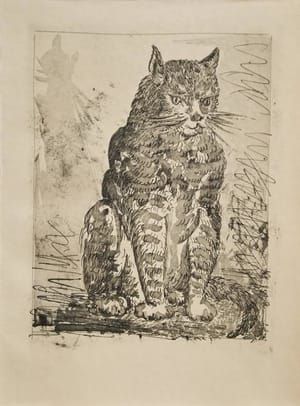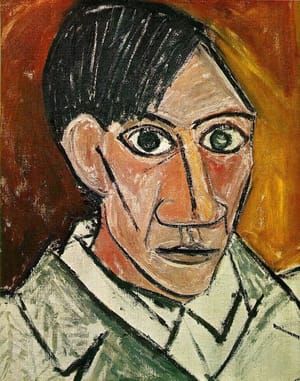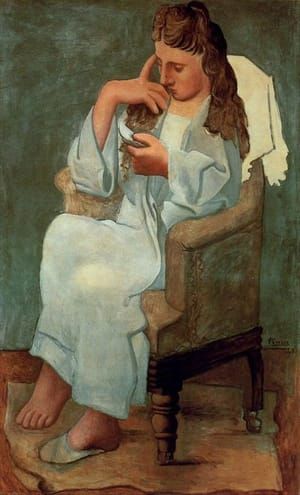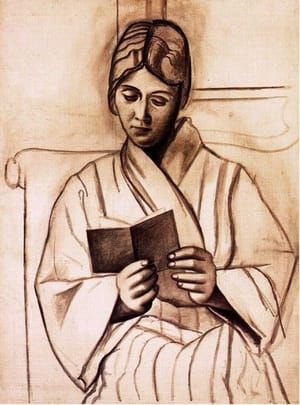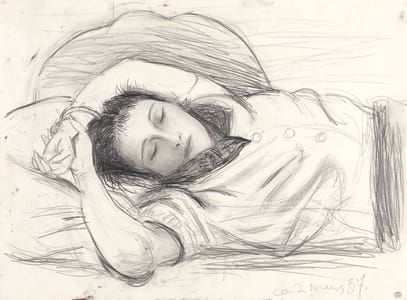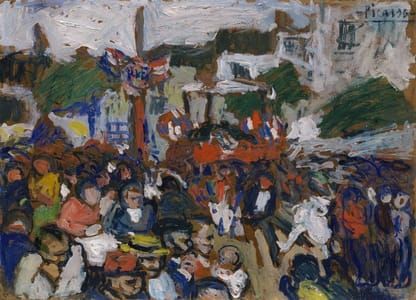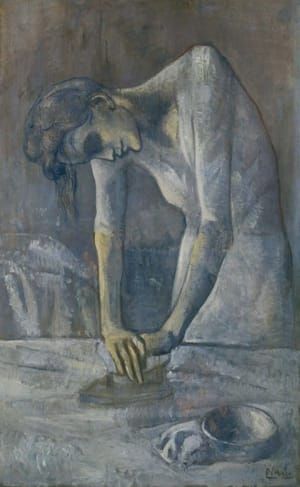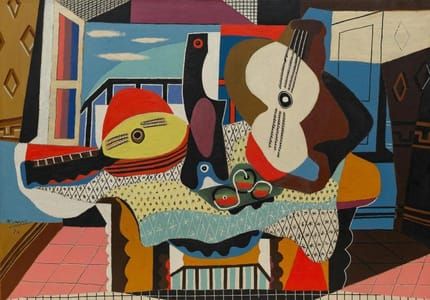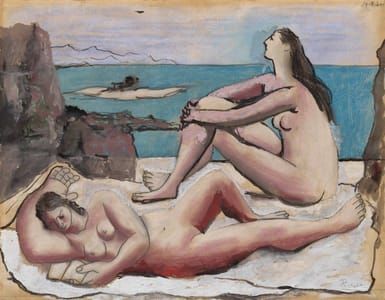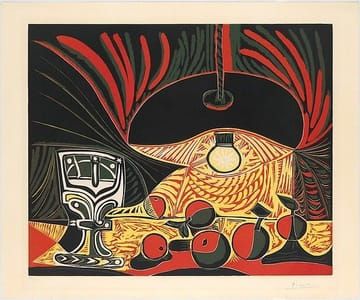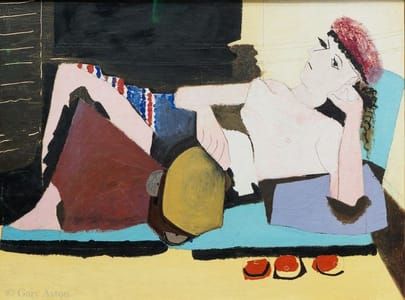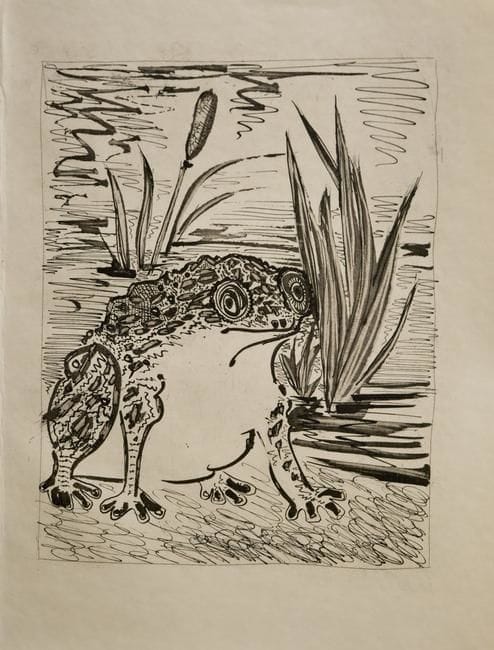

Le Crapaud (The Toad), 1936
Pablo Picasso
Le Crapaud (The Toad) (Bloch 356)
1936 (Paris)
From Eaux Fortes Originales pour des Textes de Buffon, edition of 226
Numbered 24 on the justification page
Printed by Lacourière, Paris, 1942
Published by Martin Fabiani, Paris, 1942
Image: 10 3/4 x 8 3/8 inches
Sheet: 14 3/8 x 11 inches
(Bloch 356) (Baer 603.II.B.b) (Cramer 37)
In 1931, Ambroise Vollard had suggested that Picasso illustrate Histoire Naturelle, générale et particulière by Georges-Louis Leclerc, comte de Buffon (1707-88), originally published in 44 volumes between 1745 and 1804. Buffon’s timeless treatise on the animal world “though scientifically out of date, remains nevertheless a well-known monument of 18th-century French literature for its lively style, both classical and innovative” (Brigitte Baer in Picasso the Printmaker: Graphics from the Marina Picasso Collection, Dallas Museum of Art, 1983, p. 102). Picasso, who was an animal lover, agreed. However, as was his custom he took his own time turning his attentions to this project, and once he did, approached it in his own way.
...For unknown reasons, he was suddenly inspired to work on this long-delayed project. Baer surmises that he found the subject of animals to be a respite from the emotional turmoil of his life (ibid, p. 102). Museum of Modern Art curator Deborah Wye, however, imagines Picasso may have been interested in providing amusing images for the pleasure of his baby daughter Maya (A Picasso Portfolio: Prints from the Museum of Modern Art, New York, 2010, p. 87). At any rate, the 32 etchings for the Histoire Naturelle were primarily created in February of 1936.
... By necessity, Picasso did not illustrate every animal in the book. He also did not refer to Buffon’s test at all, instead choosing animals that caught his fancy and illustrating them according to his own ideas. He worked primarily in sugar-lift aquatint, which he had perfected over the previous two years (the technique first appears in a plate from January 1934, Femme nue assise et trios têtes barbues, Bloch 216).
...The process by which text was selected to accompany Picasso’s images is unclear—it may have been done by Vollard before his death, or it may have been Fabiani. In any case, they are not complete. Of the 31 etchings that were included in the final book, only 21 include appropriate excerpts from Buffon’s text. Incongruously, Fabiani did not include Picasso’s plate for La Puce (The Flea). The official reason was because Buffon did not write about the insect, but perhaps the real motivation was because he found the subject itself and Picasso’s portrayal of it to be undesirable. (It shows a nude young woman resembling Marie-Thérèse from behind with the parasite on her buttocks.) Therefore, this image was only included in the deluxe suite that was issued with the first 36 copies of the book (the total edition was 226). Picasso had also given titles to each of his plates, which he wrote in drypoint below, but these were not included in the book edition. They do appear, however, in the deluxe suite.
In spite of the failings of the accompanying text, the 32 animals Picasso depicted in his plates for Eaux-fortes originals pour les texts de Buffon remain among the highest level of achievement in the sugar-lift aquatint technique in the history of printmaking. Perhaps equally important, “there is great charm in these beasts: among them is a comical ostrich speeding by, a friendly monkey holding out a paw, a ram posing with great daintiness, and a cat that seems almost to purr” (Wye , p. 87). They have captivated and delighted everyone who sees them since they were published, possibly more so at the time of their release in 1942, as the world was at war and was in desperate need of light diversion.
[http://www.johnszoke.com/essays/eaux-fortes-originals-pour-les-texts-de-buffon]
Uploaded on Feb 5, 2018 by Suzan Hamer
Pablo Picasso
artistArthur
Wait what?
